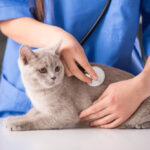Should Cats Eat Moths? Yes, most cats can eat moths without any serious harm. This article from solcat.net will dive deep into why cats are drawn to these fluttering insects and what precautions you should take as a cat owner. We’ll cover potential risks and how to redirect your cat’s hunting instincts toward safer, more nutritious options. Keep reading to discover tips on cat nutrition, predatory behavior, and maintaining your cat’s health and well-being.
1. Why Are Cats So Obsessed With Moths?
Cats are natural hunters, and moths trigger their predatory instincts. Just as a laser pointer or a feather toy excites them, the erratic flight of moths captivates their attention.
1.1 The Thrill of the Chase
The unpredictable movement of moths makes them an irresistible challenge for cats. This behavior is deeply rooted in their natural instincts. According to a study published in the Journal of Veterinary Behavior, predatory play is essential for cats’ physical and mental well-being.
1.2 Minimal Nutritional Value
Moths offer very little in terms of nutrition. However, wild cats often eat multiple small meals throughout the day. Hunting moths helps cats hone their hunting skills, which is more about instinctual behavior than nutritional gain.
1.3 Energy Balance in Wild Cats
Cats in the wild must carefully balance their energy intake, conservation, and expenditure.
- Ingesting Energy: Adult cats require between 450 and 550 kilocalories daily to maintain healthy bodily functions.
- Conserving Energy: Cats sleep up to 19 hours a day to conserve energy for hunting, organ maintenance, and reproduction.
- Expending Energy: Hunting demands significant energy, which is why cats often abandon hunts if they seem unlikely to succeed.
1.4 Training with Moths
Moths help cats practice hunting prey moving in various directions. Many cat owners observe queens bringing moths for kittens to play with, teaching them hunting skills for later life, regardless of the nutritional benefit.
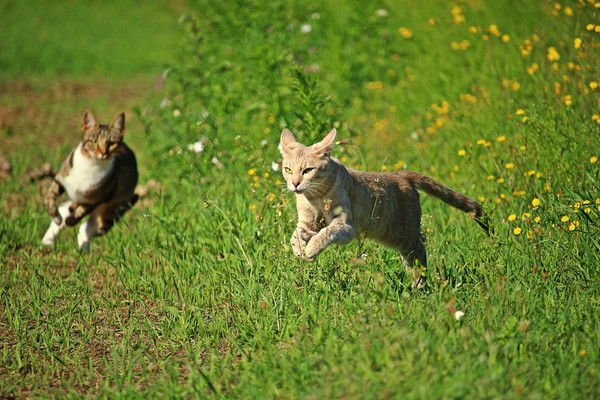 A playful kitten attentively observes a moth perched on a wall, showcasing the hunting instincts of felines
A playful kitten attentively observes a moth perched on a wall, showcasing the hunting instincts of felines
2. Is Eating Moths Safe for Cats?
Eating a moth or two is generally safe for cats, but potential risks should be considered. These include allergic reactions, stomach upset, and choking hazards.
2.1 Potential Allergic Reactions
Some moths may have toxic powder on their wings that can cause allergic reactions in cats. Symptoms include:
- Red pustules on the skin
- Swelling around the eyes (Blepharitis)
- Runny nose
- Labored breathing
If you notice these symptoms, consult your vet immediately. Most allergies are treatable with prompt action.
2.2 Digestive Problems
Cats can have sensitive stomachs, and eating moths may cause gastrointestinal upset. Symptoms may include:
- Vomiting
- Diarrhea
- Loss of appetite
Most minor digestive issues resolve within 24 hours. However, if your cat refuses to eat for more than a day, it can lead to hepatic lipidosis, a serious liver condition. According to the American Animal Hospital Association (AAHA), hepatic lipidosis requires immediate veterinary care and a special diet.
2.3 Choking Hazards
Moths can sometimes get stuck in a cat’s throat, particularly if they are large. Signs of choking include:
- Difficulty breathing
- Persistent coughing
Untreated respiratory problems can lead to seizures, paralysis, and chronic lung damage. Although rare, these scenarios require immediate veterinary attention.
3. How to Stop Cats From Eating Moths?
It’s challenging to completely stop a cat’s natural hunting instincts. Directing this drive toward safer outlets is a more effective strategy.
3.1 Engage With Toys and Lures
Toys that mimic the movement of insects or birds can capture your cat’s attention. Feather wands, toy mice, and bouncy balls are all good options.
3.2 Use a Laser Pointer
Laser pointers provide an engaging way for cats to chase a moving target. Be cautious not to shine the laser directly into your cat’s eyes, as this can cause permanent damage.
3.3 Create Food Hunts
Hide small portions of food around the house to encourage your cat to “hunt” for their meals. However, be careful with this method, especially if your cat is older, less mobile, or has impaired vision.
3.4 Signs of Stress
Cats thrive on routine and can become stressed by unexpected changes. Signs of a stressed cat include:
- Avoiding company
- Reduced appetite
- Sleeping in secluded spots
If your cat shows these signs, revert to their normal routine to help them calm down.
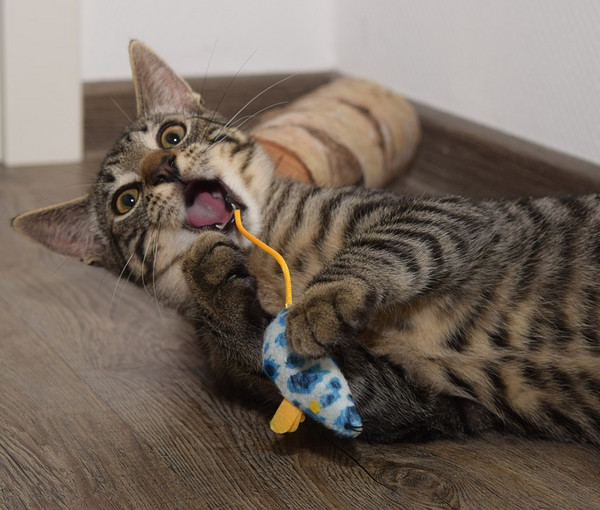 A domestic cat playfully engages with a toy mouse, embodying a controlled hunting scenario
A domestic cat playfully engages with a toy mouse, embodying a controlled hunting scenario
4. Can a Diet Change Help Reduce Moth Eating?
While moth eating is primarily driven by instinct, diet plays a significant role in satiating your cat and reducing their urge to hunt.
4.1 High-Energy, High-Protein Diet
Providing a diet rich in energy and protein can help reduce your cat’s need to hunt. As obligate carnivores, cats require:
- Animal protein
- Animal fat
- Essential vitamins and minerals
4.2 The Importance of Animal Protein
Protein is essential for a cat’s metabolism. Animal protein provides amino acids like taurine, which are critical for their health. Animal protein sources have a higher biological value (BV) compared to vegetable proteins.
| Protein Type | Sources | BV |
|---|---|---|
| Animal Protein | Chicken (raw or cooked), Turkey, Beef, Pork, Ham, Bacon, Salmon, Prawns, Mackerel, Tuna, Sardines, Liver | 88%–98% |
| Vegetable Protein | Soya, Corn, Sweetcorn, Wheat, Peas, Carrots, Rice | 45%–68% |
4.3 The Role of Animal Fat
Fat is a great source of energy and provides essential fatty acids for cell structure. It also enhances the taste of food, making it more appealing to cats.
4.4 Essential Vitamins and Minerals
Cats need vitamins A, B complex, D, and E, along with essential minerals. Below are the best sources of these vitamins:
| Vitamin Type | Best Sources |
|---|---|
| Vitamin A | Liver, Fish |
| Vitamin B Complex | Meat, Liver |
| Vitamin D | Liver, Kidney, Fish oil |
| Vitamin E | Liver, Wheat germ oil |
4.5 Ideal Nutrient Balance
Whether you choose wet, semi-moist, dry, or raw cat food, it should contain the following nutrient balance:
| Nutrient Type | Ideal Percentage |
|---|---|
| Animal Protein | Over 50% |
| Fat | Up to 20% |
| Carbs/Fiber | Maximum 3% |
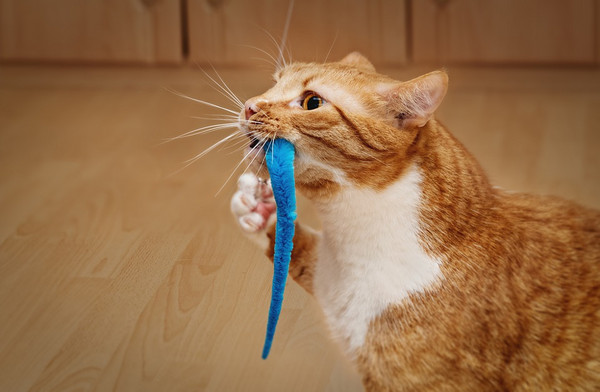 A cat enthusiastically leaps to catch a toy resembling a moth, illustrating active play
A cat enthusiastically leaps to catch a toy resembling a moth, illustrating active play
5. Solcat.net Recommends: A Better Alternative to Flying Snacks
If you want to keep your cat healthy and satisfied, solcat.net recommends a balanced, nutritious diet.
5.1 The Benefits of a High-Quality Diet
A high-quality diet provides the perfect combination of:
- Nutrition
- Taste
- Attractiveness (cats are sensitive to the smell and appearance of food)
5.2 Key Principles of a Good Cat Food
A good cat food should adhere to the following principles:
- High levels of exclusively animal protein
- Vet-formulated recipes
5.3 Animal Protein
High-quality cat food should deliver all the protein and energy your cat needs, offering a taste they will find irresistible. The use of human-grade ingredients ensures that your cat gets the best. Even the fussiest cats and those that typically dislike wet food should enjoy it. High protein levels can help with issues such as shedding, hairballs, and urinary tract infections.
5.4 Vet-Formulated
High-quality cat foods are developed and perfected by vets to ensure they are the best you can offer your cat. They should be free from known allergens and designed to keep your kitty as healthy as possible. They should also be an ethical manufacturer—cruelty-free, 100% recyclable, and carbon-neutral.
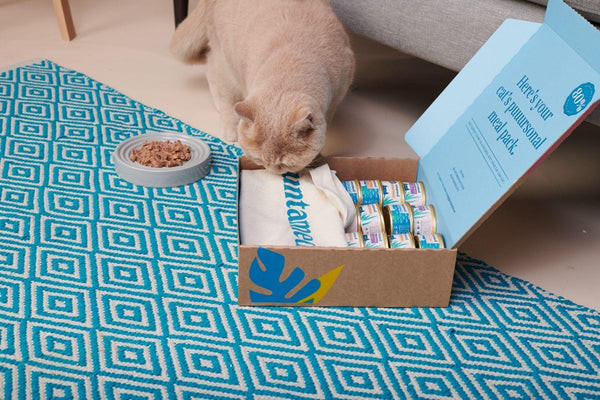 A close-up shot of a plate of nutritious cat food, highlighting the quality ingredients for feline health
A close-up shot of a plate of nutritious cat food, highlighting the quality ingredients for feline health
6. Steps to Improve Your Cat’s Diet
Here are some steps to improve your cat’s diet:
- Research high-quality cat food brands at solcat.net.
- Read reviews and compare ingredients.
- Gradually transition your cat to the new food to avoid digestive upset.
- Monitor your cat’s health and adjust the diet as needed.
7. Real-Life Success Stories
Many cat owners have seen significant improvements in their cats’ health and behavior by switching to a high-quality diet. According to feedback from cat parents:
- Week One: Cats become more active, and litter box messes decrease.
- After Two Months: Physique changes, with more muscle and fewer weight issues.
- Within Four Months: Coats become sleek and silky, and hairballs are less frequent.
- For Life: Natural weight control is achieved through a balanced diet and healthy exercise.
8. Frequently Asked Questions (FAQs) About Cats Eating Moths
8.1 Is it normal for my cat to eat moths?
Yes, it is normal. Cats are natural predators, and the erratic flight of moths triggers their hunting instincts.
8.2 Are all moths safe for cats to eat?
Not necessarily. Some moths may have toxic scales on their wings, which can cause allergic reactions.
8.3 What should I do if my cat has an allergic reaction after eating a moth?
Consult your vet immediately. Symptoms may include skin irritation, swelling, and difficulty breathing.
8.4 Can eating moths cause digestive issues in cats?
Yes, eating moths can sometimes cause stomach upset, leading to vomiting or diarrhea.
8.5 How can I prevent my cat from hunting moths?
Provide plenty of interactive toys, use a laser pointer, and create food hunts to satisfy their hunting instincts.
8.6 Does diet affect my cat’s urge to hunt moths?
Yes, a high-protein, high-energy diet can help reduce your cat’s need to hunt.
8.7 What type of cat food is best for reducing hunting behavior?
Choose cat food with over 50% animal protein, up to 20% fat, and a maximum of 3% carbohydrates and fiber.
8.8 Are there any long-term health risks associated with cats eating moths?
While occasional moth eating is generally safe, frequent consumption could lead to digestive issues or exposure to toxins.
8.9 How often should I feed my cat?
Most adult cats do well with two meals a day, but portion sizes should be adjusted based on their individual needs.
8.10 Where can I find more information about cat nutrition?
Visit solcat.net for reliable and up-to-date information on cat care and nutrition.
9. Conclusion: Balancing Instincts and Health
While cats’ love for hunting moths is natural, it’s crucial to ensure their diet and environment support their overall health. By providing engaging toys, a high-quality diet, and monitoring for any adverse reactions, you can balance their instincts with their well-being. For more expert advice, tips, and resources on cat care, visit solcat.net today!


